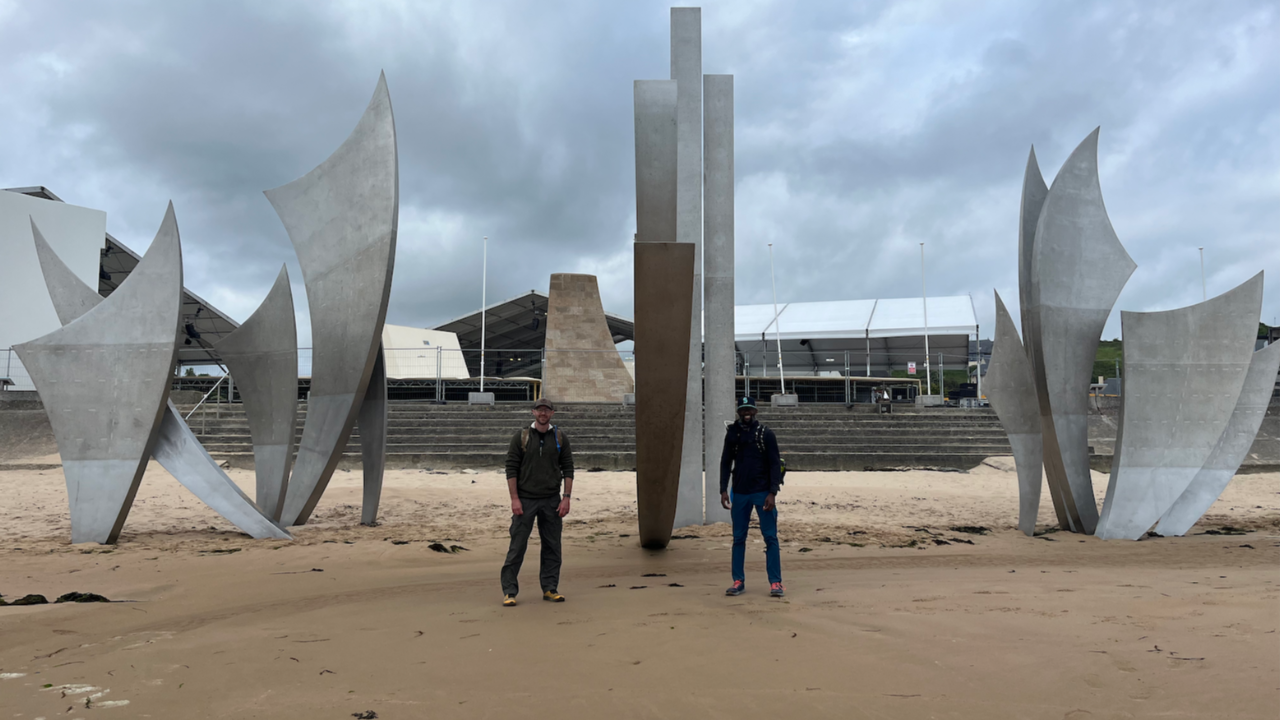Rucking in Normandy, France
Jul 17, 2024
From the POV of: RT Hill.
I participated in a GORUCK event in Normandy, France for the 80th Anniversary of D-Day. I rucked the beaches of Normandy, through the hedgerows and beside the cliffs of Pointe du Hoc and retraced the footsteps of those who liberated the world from tyranny. We honored those who made the ultimate sacrifice for our freedom.
GORUCK has been hosting events in Normandy, France since 2013. They went big for the 75th Anniversary of D-Day and the 80th Anniversary was perhaps one final time to honor those from the Greatest Generation. Quest Meeks went along for the ride with me. Here's a little about what rucking is, and more from our adventure!
What is rucking?
Rucking is walking a set distance or set time with weight on your back. It's used as a source of training in the military community, given that soldiers need to be able to carry gear over long distances. However, it's not just beneficial for soldiers. Rucking is a form of cardiovascular endurance training that benefits heart health and functional longevity. For someone with a goal to be able to hike late into life, ruck training in their 30s and 40s would be an excellent way to prepare themselves for this goal.
Why is rucking all the rage right now?
Rucking is having a moment now because it is beneficial and has a low barrier to entry. If you have a backpack and some weight lying around the house, then you can go for a ruck.
What are the benefits to rucking?
The benefits are that it is good for cardiovascular health, bone and joint health, there's a short recovery time, and nearly everyone can do it regardless of their fitness level.
How can you start rucking?
I'll have clients do it when they walk their pets or incorporate it into a regular walk they may have in the park. Get some weight and get going!
Now, some photos from our trip!
Sainte-Mère-Église

A well-known incident involving paratrooper John Steele of the 505th Parachute Infantry Regiment occurred during early airborne landings when his parachute caught on the spire of this town church. He hung there for two hours, pretending to be dead until the Germans took him prisoner. Steele later escaped and rejoined his division when U.S. troops of the 3rd Battalion, 505th Parachute Infantry Regiment attacked the village. The incident was portrayed in the movie The Longest Day by actor Red Buttons.
We rucked across two of the allied force landing points, one in Sainte-Marie-du-Monte, codename “Utah." We then left the French town of Sainte-Mere-Eglise where the Airborne museum is located and then were on to our 18 mile march to our next location. We moved through pitch black but got an amazing sunrise on the path to Omaha Beach.
The World War II Pointe du Hoc Ranger Monument

Located on a cliff eight miles west of Normandy American Cemetery, which overlooks Omaha Beach, France. It was erected by the French to honor elements of the American Second Ranger Battalion under the command of Lt. Col. James E. Rudder. During the American assault of Omaha and Utah beaches on June 6, 1944, these U.S. Army Rangers scaled the 100-foot cliffs and seized the German artillery pieces that could have fired on the American landing troops at Omaha and Utah beaches. At a high cost of life, they successfully defended against determined German counterattacks.
Omaha Beach Memorial

Located on the very site of the American naval landing of June 6, 1944, 200m from Omaha Beach (known as Bloody Omaha), the Omaha Beach Memorial was created to preserve the memory of all these young soldiers who died in 1944 so that younger generations will never forget at what price freedom was obtained.
We ended with C-130 aircraft for airdrops and cargo delivery flying overhead as we made our way back to base camp.

Total time = 16 hours. Total distance = 53 miles. The weekend was a celebration of liberation and the towns all had festivals and reenactments.
Stride on,
RT